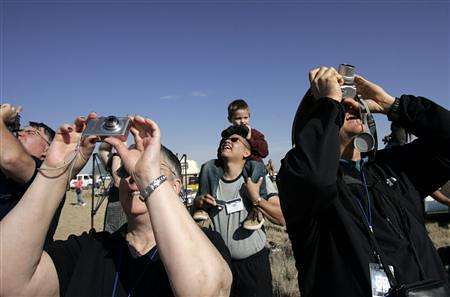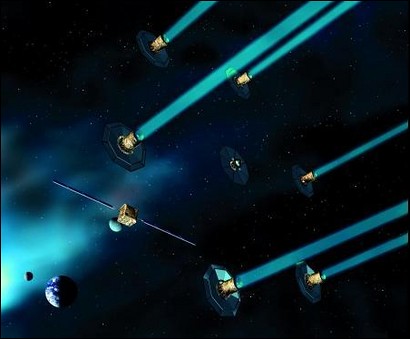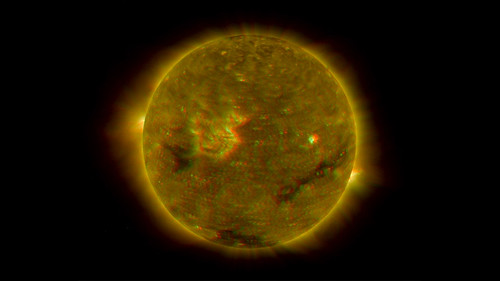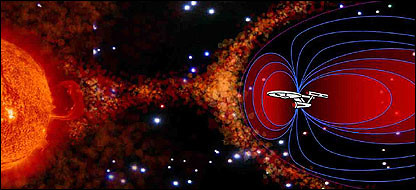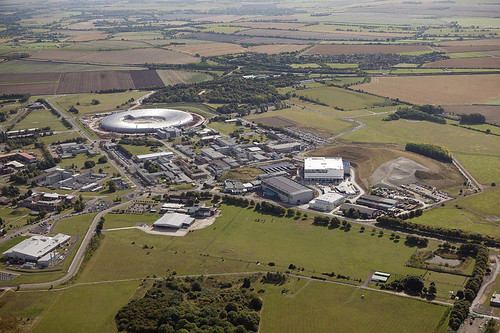
Remember Tianamen Square? To many people, it remains a fuzzy memory. The U.S. State Dept. remembers it well — especially the laws and regulations created since then regarding technology transfer. Satcom falls under that category.
We thought AsiaSat was going to be taken private by GE (see this comment from 2 months ago) after SES bought them out. The South China Post reports this US$295 million deal won’t be happening:
The Bush administration’s decision to stop a General Electric subsidiary from teaming up with state-owned Citic Group to privatise Asia Satellite Telecommunications Holdings is the latest in a long line of mainland-related deals that the United States has blocked for political reasons.
At the root is a policy put in place by former US president George H.W. Bush, father of the current president. On June 5, 1989, the day after the Tiananmen Square crackdown, Mr Bush issued a moratorium on all US military exports to the mainland, including satellites.
Shortly after, the US Congress passed laws banning satellite exports to China. There were two exceptions: the president could issue a special waiver on the grounds that either the mainland had achieved political and human rights reforms or the deal was in the US national interest.
What constitutes "national interest" has since been a subject of keen debate in Washington, and it appears that Citic and GE’s HK$2.3 billion bid for AsiaSat is the latest victim.
"The US Department of State has in correspondence with General Electric said it will not grant the approval necessary to implement the proposed privatisation," AsiaSat said yesterday in an announcement on the scuttling of the deal.
As the leading regional satellite operator in the Asia-Pacific, the company makes for an attractive target. It serves more than two-thirds of the world’s population with its three satellites: AsiaSat 2, AsiaSat 3S and AsiaSat 4. They provide services to the broadcast and telecommunications industries.
More than 240 digital television channels and 130 radio channels are now delivered by AsiaSat’s satellites, reaching about 96 million households with more than 360 million viewers across the Asia-Pacific.
Last year, AsiaSat tapped California’s Space Systems/Loral, a subsidiary of US high technology firm Loral Space & Communications, to build AsiaSat 5. The new-generation satellite is slated for launch next year and it is unclear what impact, if any, the State Department’s latest action will have on that deal.
It is not the first time the company has been at the centre of the US-China export dispute.
In December 1989, despite an outcry in the Congress, the elder Bush ruled that exporting satellites – the manufacture of which is dominated by several US companies – was in the national interest. That cleared the way for AsiaSat 1, which in April 1990 became China’s first commercially launched US-made satellite.
But the following year, Mr Bush blocked the sale of satellite components to the mainland.
The move was interpreted as an attempt to appease Congress – which was upset with Chinese sales of military equipment to Middle East nations – and to win support for Mr Bush’s plans to further liberalise trade with the mainland.
The present-day Bush administration’s move against the Citic-GE deal may have had a similar political motive.
As the US prepares for another presidential election cycle, analysts have interpreted the recent World Trade Organisation case against China as an attempt by beleaguered Republicans to head off some of the inevitable China-bashing that is likely to emerge from a Democrat-controlled Congress.
But, for now, the only obvious loser is business.
And this from Variety:
A plan to take Asia Satellite Telecommunications Holdings, which operates three satellites across the region, into private ownership was quashed Tuesday (April 24) when it was blocked by the U.S. Dept. of State.
The private-ownership plan was proposed by AsiaSat and AsiaCo, a joint venture between China’s state-owned Citic Group and GE Capital Equity Investments from the U.S.
If the company had gone private, Citic and GE would each have owned 50%. GE became a major shareholder of AsiaSat in early April with a 34% holding.
Deal was subject to a number of conditions, one of which was approval by the State Dept. and compliance with U.S. International Traffic in Arms Regulations.
As a result, a court meeting and special general meeting scheduled for Tuesday morning were "adjourned indefinitely" only hours before they were skedded to take place.
The deal appears to have raised national security hackles at the U.S. State Dept. concerning transfer of satellite technology to China.
AsiaSat didn’t immediately return phone calls for comment.
Trading in AsiaSat shares were suspended from just before noon on Monday and trading in American Depositary Shares (ADS) on the New York Stock Exchange was suspended Monday.
Trading resumed Wednesday morning at 9:30 in Hong Kong and once the NYSE opens its trading day Wednesday, ADS trading will start up again.
In an increasingly competitive market, AsiaSat’s shares have continued to drop over the past three years. Price of shares decreased almost 12% during that period compared to a more than 51% increase in the Hang Seng Index.
The company hoped being taken private would give it greater flexibility to focus on the development of business and marketing activities; and relieve it of the financial and administrative burden of dual listings on both the Hong Kong Stock Exchange and the New York Stock Exchange, according to a press release dated Feb. 14.
AsiaSat’s three satellites serve two-thirds of the world’s population with its three satellites, which provide services to the broadcast and telecom industries.
It has more than 270 TV channels and 130 radio channels delivered via its satellites and reaches 96 million households in the Asia-Pacific region.
AsiaSat’s shares fell 5.7% on Wednesday, closing at HK$16.50. It’s U.S. ADRs were down 8.97% on the NYSE.
